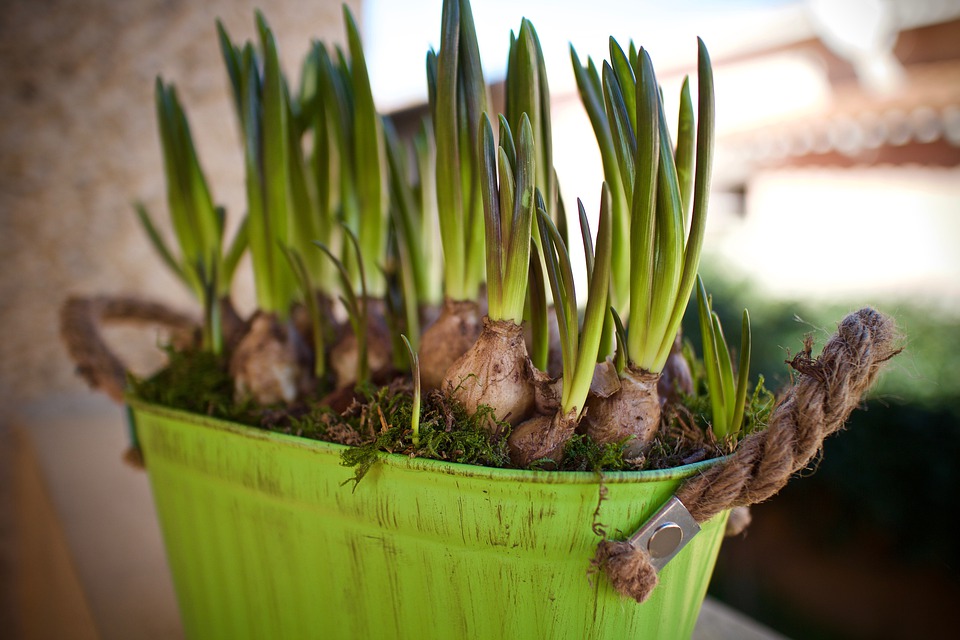The key difference between bulb and rhizome is that bulb is a modified underground bud with a fleshy scaly leaf growing from it, while rhizome is a part of the main stem that grows horizontally underground.
Bulbs, corms, tubers, and rhizomes are vegetative parts of plants that help plants to survive under harsh conditions. Bulbs and rhizomes are underground modified plant parts that have a food storage function. Structurally, rhizomes are underground modified swollen stems that grow horizontally. Bulbs are underground modified buds. Both bulbs and rhizomes can give rise to new plants and are useful in the vegetative propagation of plants.
CONTENTS
1. Overview and Key Difference
2. What is a Bulb
3. What is a Rhizome
4. Similarities – Bulb and Rhizome
5. Bulb vs Rhizome in Tabular Form
6. Summary
What is a Bulb?
A bulb is a modified structure seen in plants. Structurally, it is the underground modified bud. It is made up of scales, which are modified leaves. Bulbs store starch in these scales. In the lower side of the reduced stem of the bulbs (basal plate), roots originate. Shoots originate from the top of the bulb. Unlike rhizomes, bulbs do not have nodes and internodes. Bulbs contain lateral buds as well.

Figure 01: Bulb
There are two types of true bulbs as tunicate bulbs and imbricate bulbs. Tunicate bulbs have a paper-like covering (tunic) to protect fleshy scales, while imbricate bulbs do not have a tunic. Certain plants can be propagated via bulbs. Onion, garlic, tulip, and lily are several examples of bulbs.
What is a Rhizome?
Rhizome is a modified, underground thickened stem that grows horizontally below the surface. In fact, it is a root-like stem that is part of the main stem. It grows slowly inside the soil. This underground plant stem has nodes and internodes. From the nodes, new roots and shoots originate.

Figure 02: Rhizome
Rhizome is a useful part of vegetative propagation. It can give rise to a new plant. Rhizomes can be seen in plants such as ginger, iris, canna lily, Chinese lantern, poison-oak, bamboo, bermudagrass, and purple nut sledge.
What are the Similarities Between Bulb and Rhizome?
- Both bulb and rhizome are underground modified stems.
- The primary function of both structures is food storage.
- These structures ensure the survival of plants.
- Both structures can give rise to new plants.
- They are important in the vegetative propagation of plants.
What is the Difference Between Bulb and Rhizome?
Bulb is an underground modified bud with fleshy scale-like leaves surrounding a bud, while rhizome is a modified, underground stem that grows horizontally. So, this is the key difference between bulb and rhizome. Onion, garlic, lily, and tulip are examples of bulbs, while ginger, turmeric, hops, asparagus, and lotus are examples of rhizomes.
Bulbs do not grow horizontally, while rhizomes grow horizontally in the soil. Moreover, bulbs are globe-shaped but rhizomes are irregular or flattened. Another difference between bulb and rhizome is that bulbs do not have nodes and internodes, while rhizomes have nodes and internodes.
The below infographic lists the differences between bulb and rhizome in tabular form for side by side comparison.
Summary – Bulb vs Rhizome
Bulb is a modified bud that lies underground. Rhizome is the modified main stem that lies underground. Both bulbs and rhizomes are used in the vegetative propagation of plants. Bulbs have scales while rhizomes do not. Moreover, rhizomes have nodes and internodes while bulbs do not have. Rhizome grows horizontally below the surface of soil, while bulbs do not grow horizontally. Thus, this summarizes the difference between bulb and rhizome.
Reference:
1. “Tubers, Corms, Rhizonmes, and Bulbs.” American Meadows.
2. “Plant Library: Bulbs, Corms, Tubers & Rhizomes.” Payne’s Nurseries, 28 Feb. 2014.
Image Courtesy:
1. “Plants-bulbs-muscari-blue-nature-4857308” (CC0) via Pixabay
2. “Ginger rhizome” By Mk2010 – Own work (CC BY-SA 4.0) via Commons Wikimedia
ncG1vNJzZmivp6x7pbXFn5yrnZ6YsqOx07CcnqZemLyue9ahmK1lmah6tbTEZpuinpaav6a6wp5km52krLKmuoybrKWaXZa7pXnRoaCzp52afA%3D%3D